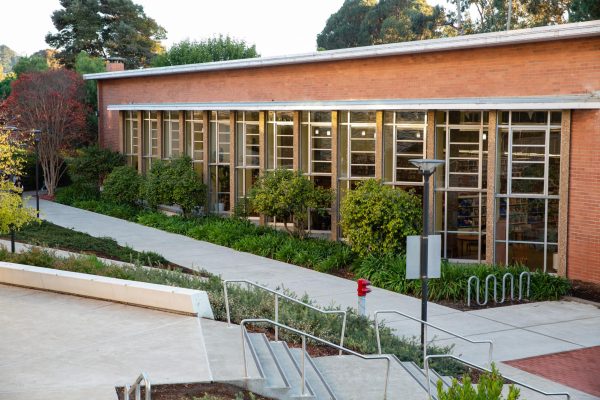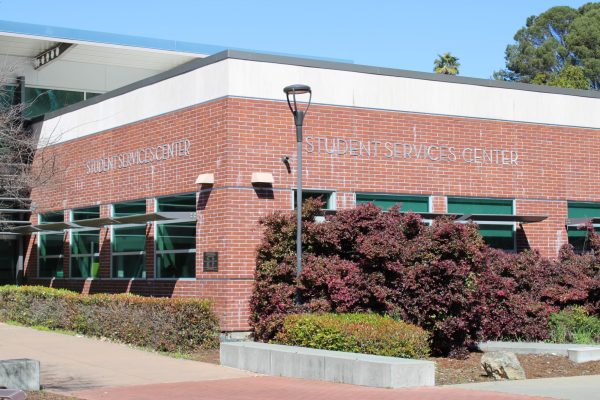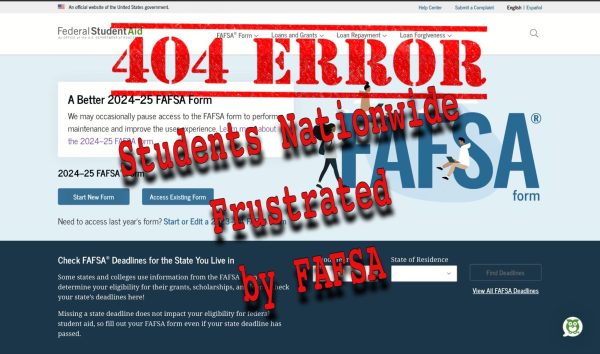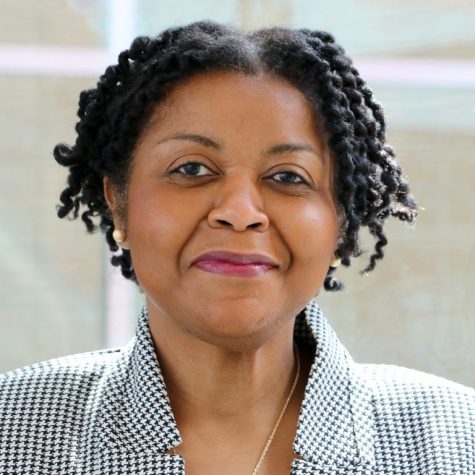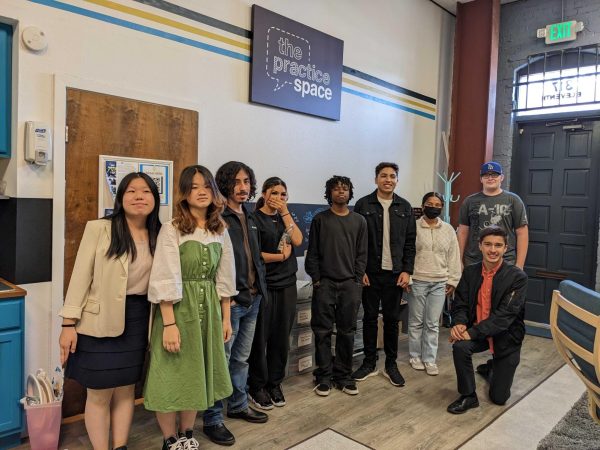ASU uses student fees to pay full-time employee’s salary
CCC’s student government voted 7-1 to absorb 25 percent of adviser’s pay, keep position full-time
April 25, 2017
The Associated Student Union Board voted to use funds from the $5 Student Activity Fee (SAF) to pay 25 percent of Student Life Coordinator Joel Nickelson-Shanks’ full-time salary for the 2017-18 fiscal year.
At its meeting on April 19, in a 7-1 vote, the Contra Costa College ASU Board approved the allocation of $17,656 to augment Nickelson-Shanks’ full-time salary.
The waivable $5 fee is charged to students, districtwide, upon enrolling into classes every spring and fall semester.
“That money is coming from the Student Activity Fee,” ASU President Safi Ward-Davis said at the student government’s weekly public meeting.
“(Some) of the money that comes in will be used to pay for Joel,” Ward-Davis said. “So, Joel works for (the ASU Board).”
ASU Treasurer Arius Robinson said the district deposits SAF funds into the ASU’s operating budget annually to sponsor club events, scholarships or any student-led community projects.
Ward-Davis explained that this is not the first time the ASU agreed to use student fees to pay a portion of its advisers’ salary, and it won’t be the last.
The 2015-16 ASU Board agreed to cover the cost of a full-time Student Life coordinator until 2018-19 with annual approvals, Ward-Davis said.
“The person in (Nickelson-Shanks’) position previously was not paid as a full-time employee,” she said. “It was only at .75, but whoever is in that position does the work of a full-time employee.”
Covering the $17,656 salary augmentation for the position equates to 3,531 students paying the $5 for one semester.
ASU Senator Cynthia Anderson voted against renewing the agreement.
“I can see $5,000 or even $10,000, but $17,000 is quite a bit from the budget,” Anderson said. “That is a nice sum that could have benefited more students. But I understand people have to be paid.”
Before the ASU Board members voted last week, Ward-Davis explained that Dean of Student Services Vicki Ferguson and former vice president Tammeil Gilkerson approached members of the previous ASU Board asking for this funding.
Former Student Life coordinator Ericka Greene said the ASU Board was approached at the end of the 2016 spring semester after it had voted to approve the use of SAF funds to hire an part-time office assistant to increase Student Life Office hours.
She said the ASU went back on that vote, and negotiated the terms to augment the Student Life coordinator to a full-time position in closed meetings with Ferguson and Gilkerson.
Ward-Davis said, “(Gilkerson) and Ferguson came to the ASU and asked if it would sponsor the 25 percent to jump his pay up to 100 percent, or full-time.
“The ASU voted on it (last week) and we agreed to cover the 25 percent to make (Student Life coordinator) a full-time position.”
Ward-Davis said Nickelson-Shanks was hired in August, after the position was posted by the college with full-time hours, pay and benefits.
Finding funds
Ferguson said the Student Life coordinator’s main role is as the ASU’s adviser, but is still a college employee with other responsibilities under the department of Student Life.
Ferguson said the college’s budget did not have enough money to fund a full-time employee due to the college’s low enrollment.
“Each college is responsible for how it uses its funding, and the college spends about 90 to 95 percent of the budget on employee salary and benefits,” she said.
She said after looking for funding elsewhere, going to the ASU was a “last resort.”
“I agree that this position should be paid by the college’s general funds, but we have to look at what these funds go toward,” Ferguson said.
“We have to understand we are in growth mode and have to be recruiting (more students). The college would gladly make that position whole, and take off the students’ portion of the payment once enrollment increases.”
Robinson said voting to cover the 25 percent of the position’s salary was not an easy decision, but if Nickelson-Shanks was not a full-time employee it would hurt the ASU more than covering the $17,000 for three years would.
“I don’t believe students should cover the cost,” he said. “But the Student Life coordinator’s job caters to students.
“And I don’t think having 25 percent more would change how we operate. We still do a lot with what we have.”
According to the ASU’s account details, provided by CCC’s Business Office, the ASU had a starting balance of $50,000 for the 2016-17 fiscal year. The $17,656 to fully fund the position was taken from this year’s budget.
At the meeting, Anderson said the district should cover the extra cost if the college can’t.
“I’m always concerned if there are enough funds for what the ASU wants to get done,” she said at the meeting as she explained why she voted no.
“And like I said, that is quite a big sum going to someone’s pay, but I get it,” she said. “I think he’s worth it. Don’t get me wrong, but (the money) shouldn’t be coming from us.”
Ferguson said there is no college, district or state policy that explicitly restricts an ASU Board from agreeing to pay for a district employee’s salary.
California Community College Chancellor’s Office Student Leadership Dean Margaret Ortega said that there is no writing in the Student Fee Handbook that restricts this payment.
“When it’s an internal agreement, the college and district have their own structure of policies,” Dr. Ortega said.
At the ASU meeting, Ward-Davis said, “The next president and the next ASU Board can say ‘looking at our budget we can’t do this anymore.’ It’s written like that in the contract.”
Interim burdens
Business Services Supervisor Nick Dimitri said this was a verbal agreement between the college administration and the student government, and there is no written contract on file.
Dimitri said the 25 percent the ASU covers is not an ongoing cost and must be reapproved by the ASU Board annually before he can process the payment.
“The cost will go up every fiscal year, but not by much,” he said. “Only to cover small increases in benefits pay.”
Ward-Davis said, “We didn’t want to make a contract with the college without being capable of saying our budget is not strong enough to continue to do that.”
Ferguson said that if the ASU Board were to vote against the agreement, then the position would return to part-time status.
“We would have to decrease office hours and decrease student activities,” she said.
College President Mojdeh Mehdizadeh said she approved the agreement last year when it became clear that keeping the Student Life coordinator as an interim or part-time position would not help the college increase enrollment.
“It’s student money,” Mehdizadeh said. “If the student representatives feel this is something they are willing to spend student fees to support it shows the value of this position.”
Ferguson said she agrees a part-time position would hinder the growth of campus culture.
“It was tough not having someone in that positon full time,” she said. “It was a very stressful time.”
Ward-Davis said because it was a part-time position, the college was unable garner enough quality applicants for the position.
Ferguson said once they put the bid out as a full-time position they made it explicit that it may drop back to 75 percent in three years if the college budget still can’t cover the cost.



